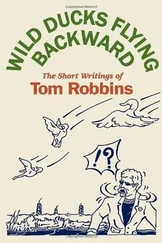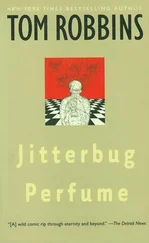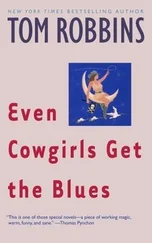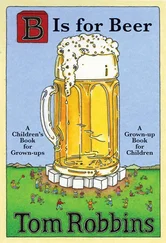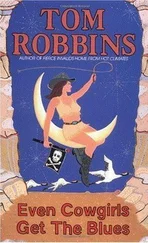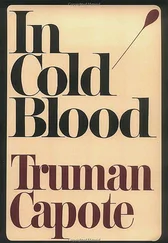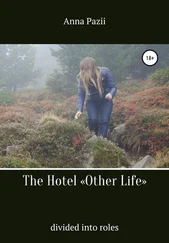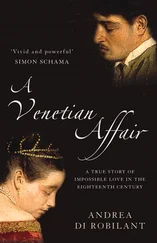I bought the little girl white sandals and frilly white dresses with sashes, and thus attired, she became quite a sight around town, perched on the back of my black motorcycle, as we roared off to art openings, concerts, and film premieres. We also accompanied friends on rain-forest camping trips and nature hikes, and today she remembers those days as the happiest of her childhood. Although Susan, with whom I never again cohabited once I managed to ease her out, refused to allow me to adopt the child (claiming in one drunken rant that I wasn’t living “a realistic existence”), I’m proud to receive a Father’s Day card from Kendall each and every year.
I recount that experience because some unhappy reader — who knows, maybe even you? — may at some point desperately require advice in developing an exit (or eviction) strategy, and alas, Abigail Van Buren is dead. Should the mate with whom you share living quarters become, as sometimes happens, intolerable, and you are all too aware that you can neither move out nor force him or her to decamp without precipitating hellish, gut-ripping, guilt-ridden, tear-splattered scenes, why not appeal to the party’s unrealized (and doubtlessly unrealistic) creative urges? Praise their artistic potential, challenge them to follow their dream, assuring them that fame and fortune await if only they could acquire the necessary solitude, the private space in which their caged bird might take wing. Come on, it’s worth a try. It worked for me.
Yep, I’d married a stranger, quit my job, moved three thousand miles from home, dropped out of graduate school, and stumbled into a career as an art critic; but those changes, which most of us would consider fairly significant, weren’t a poot in a plastic poke compared to the permutation, the alchemical alteration, the reorientation I would undergo while sitting quietly in an armchair one July afternoon in 1964. I’m not exaggerating. In fact, the hyperbole does not exist that would do it justice.
It wasn’t one but a succession of white rabbits popping up first here, then there, that would eventually lead me down the hole into Wonderland. The first of these oracular bunnies had caught my eye when one Saturday some artists invited me to accompany them up in the mountains on a chanterelle hunt. Chanterelle? Sounded like the stage name of a chanteuse in a Parisian nightclub. I was pretty sure no sexy French singer was lost in the Cascades, but what, then, was a chanterelle? A mushroom. It turned out to be a damn mushroom.
Down South where I hailed from, folks did not waste a perfectly fine autumn afternoon tramping over hill and dale looking for wild mushrooms. Au contraire . Whenever one of my people chanced upon a mushroom, they’d mutter “Toadstool” under their breath and kick the thing through the goalposts of oblivion as if it were one of Satan’s fumbled footballs.
The mushroom is an object of mystery, blooming in thick fogs of superstition, its roots reaching into the deepest cellars of the human unconscious. On one level, it has a reputation as an aphrodisiac, both its image and its many names in many languages soaked with erotic meaning. Throughout the world, the mushroom has been employed as a symbol for phallus, vagina, and the sex act itself. Conversely (or maybe not), it has been chosen since primitive times to represent evil and death. Standard equipment for poisoners, a necessary accessory for the well-appointed witch, dark is the hue of fungoid repute.
Culturally, racially, we tend to be either mycophobic or mycophilic: we adore mushrooms or detest them, there’s scant middle ground. The most avid lovers of fungi are the Indo-Europeans, that vast body of peoples that stretches from China across the states of the former Soviet Union to the fringes of Central Europe. The French and Italians are myco-bigoted, limiting their fondness to a few familiar varieties, falsely regarding all others as toxic or unfit; while Greeks, Celts, and Anglo-Saxons have traditionally placed mushrooms in the category they reserve for spiders, bats, bohemians, and things that creep in the night.
I, being genetically Anglo-Saxon and bohemian by temperament, found the prospect of hunting, picking, and eating wild mushrooms sketchy if not repulsive, yet also marginally fascinating in that it flickered with the allure of forbidden fruit. So, mildly hesitant, I agreed to join the search for Mademoiselle Chanterelle, never dreaming that I would, in the process, be glimpsing the first of those white rabbits destined to lead me through a gash in the fabric of consensual reality.
There are white and off-white mushrooms, but the chanterelle itself is not one of them; this baby is the color of egg yolks, ruffled like an Elizabethan collar, and shaped like a miniature trumpet. In the Douglas-fir forests of the lower Cascades they sprout in profuse patches, or they did before so much of our woodlands were leveled by timber barons. In the fall of 1962, the woods were less ravaged than today, however, and spread out, we moved among the towering firs as if through the chambers of an ancient temple, involuntarily respectful to the point of reverence; uncharacteristically hushed until one of us would come upon a bristling horn section of chanterelles, silent as if waiting for some elfin conductor to raise his baton; whereupon the spotter would let go a half whoop and our party would set upon the saffron trumpets, baskets at the ready.
The sheer novelty, the mystique if you will, of picking wild mushrooms with culinary intent proved captivating to this Southern boy who, growing up, had been warned to never so much as touch a feral fungus. The genes in my old hunter-gatherer DNA were reignited. Even when our baskets were loaded, I didn’t want to leave the woods. Driving downriver to La Conner whence we’d come, I felt like an aborigine being forced off his ancestral lands.
Ah, but the good times weren’t over yet. In the old La Conner farmhouse where my friends lived, we washed the duff and fir needles off the chanterelles, dipped a quantity of them in a thin batter and fried them in butter. Another batch, once cleaned, were chopped, sautéed in butter seasoned with paprika, then simmered for a few minutes in sour cream and served over toast. Chanterelle meat proved thick and firm, and although a wee bit peppery, tasted rather like… you guessed it: chicken. I imagined a hen fattened on nettles and apricots.
These days, when chanterelles, morels, portobellos, and other undomesticated mushrooms may be found on the menus of a great many upscale restaurants; and in season, piled in the bins of better supermarkets, it may be hard to understand what a thrill, what an outlandish oddity was my personal introduction to mushrooming in a society still fraught with fungophobia. (Sir Arthur Conan Doyle spoke for most of the Anglo-Saxon population when he labeled mushrooms as “foul pustules” and a “filthy crop,” a prejudice hardly weakened by the general who described the detonation of the first atomic bomb at Los Alamos in 1945 as having formed a “mushroom-shaped” cloud. Mom! Dad! Bud! Sis! Duck and cover! The mushroom is coming!) Ah, but I was hooked, becoming henceforth an avid mycophile.
La Conner, the picturesque fishing village and longtime artist community where, eight years later, I would settle down (if that’s not too wimpy a phrase), made an excellent home base for mushroom expeditions. From there, friends and I motored into the Cascades all that autumn in search of oyster mushrooms, king boletus, matsutake, and more chanterelles; invaded foothill pastures (sometimes just ahead of an irate farmer or an irate bull) to gather any one of several tasty agaricus species. Winter shut us down, but come late March we turned our attention to the morel, one of the most prized and savory of all wild mushrooms despite its uncanny resemblance to the withered gray penis of a thousand-year-old mummy. We searched, we picked, we cooked, we ate.
Читать дальше

